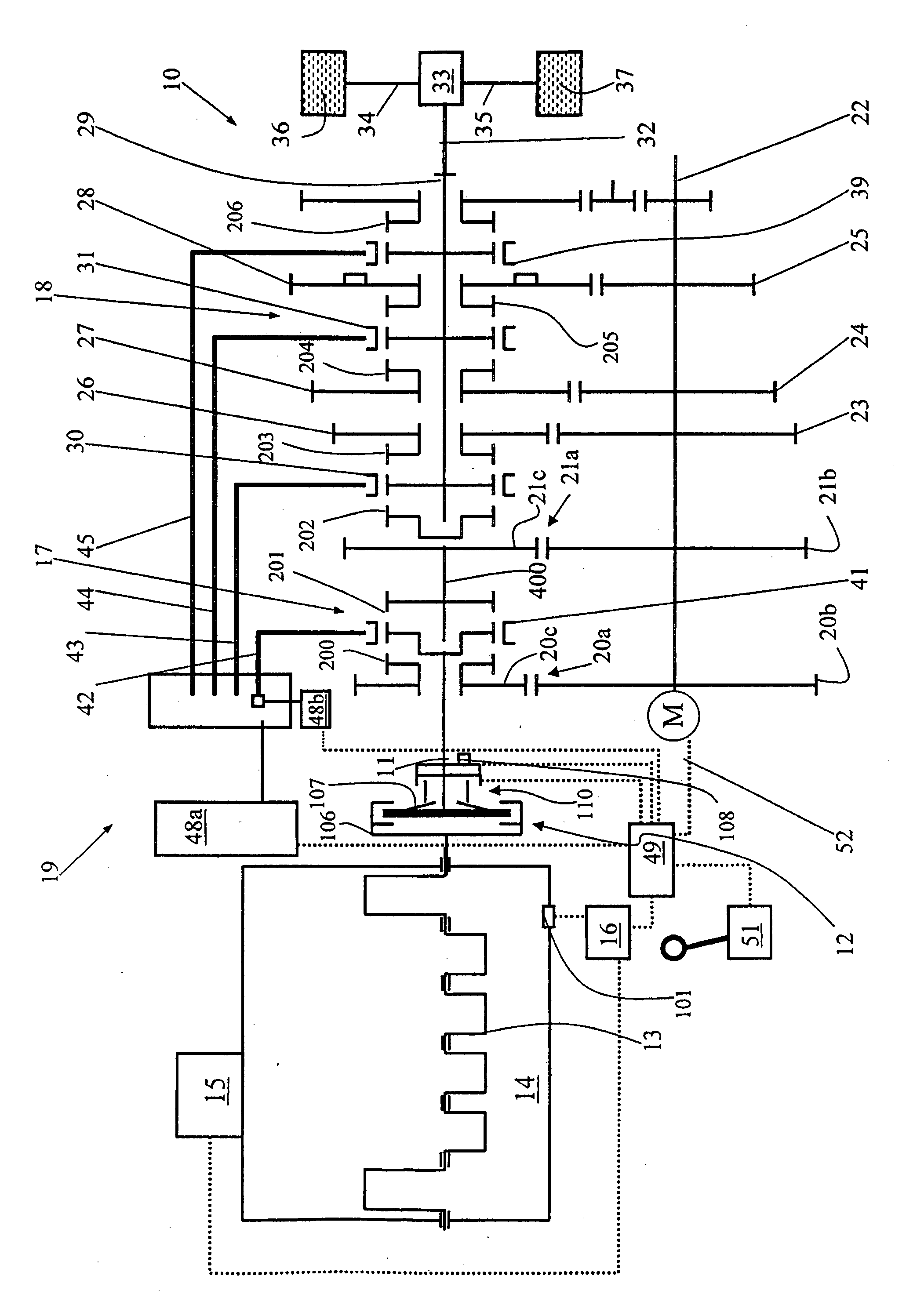Shifting claw transmission and shifting method therefor
a transmission and shifting technology, applied in the direction of gearing, toothed gearings, gearing elements, etc., can solve the problem that the slow-acting electric motor cannot meet the high dynamic requirements, and achieve the effect of facilitating shifting
- Summary
- Abstract
- Description
- Claims
- Application Information
AI Technical Summary
Benefits of technology
Problems solved by technology
Method used
Image
Examples
first embodiment
[0058]In a first embodiment, the signal here may be fed to the electric motor M if the transmission controller 48a senses that the power demand to displace the sliding sleeve by means of the respective switching rod rises above a threshold value. Such a high power demand can specifically allow the conclusion to be drawn that the XY actuator cannot displace the sliding sleeve any further because it is in a tooth-to-tooth position with the shifting tooth arrangement.
second embodiment
[0059]In a second embodiment, the signal of the transmission controller to rotate the countershaft by means of the electric motor M may be provided whenever a gear speed is to be engaged. As a result, the tooth-to-tooth problem cannot occur from the outset.
[0060]The electric motor can be arranged coaxially with respect to the countershaft. In an alternative embodiment, the electric motor can also be coupled to the countershaft by means of a step-down transmission i>1. By means of this step-down transmission it is ensured, on the one hand, that the electric motor can have very small dimensions and nevertheless can make available sufficient torque in order to accelerate the countershaft. On the other hand, the rotational speed of the countershaft with respect to the electric motor is stepped up so that even low rotational speeds of the countershaft induce a relatively high rotational speed and therefore a relatively high voltage at the electric motor. In this way it is also possible t...
PUM
 Login to View More
Login to View More Abstract
Description
Claims
Application Information
 Login to View More
Login to View More - R&D
- Intellectual Property
- Life Sciences
- Materials
- Tech Scout
- Unparalleled Data Quality
- Higher Quality Content
- 60% Fewer Hallucinations
Browse by: Latest US Patents, China's latest patents, Technical Efficacy Thesaurus, Application Domain, Technology Topic, Popular Technical Reports.
© 2025 PatSnap. All rights reserved.Legal|Privacy policy|Modern Slavery Act Transparency Statement|Sitemap|About US| Contact US: help@patsnap.com


